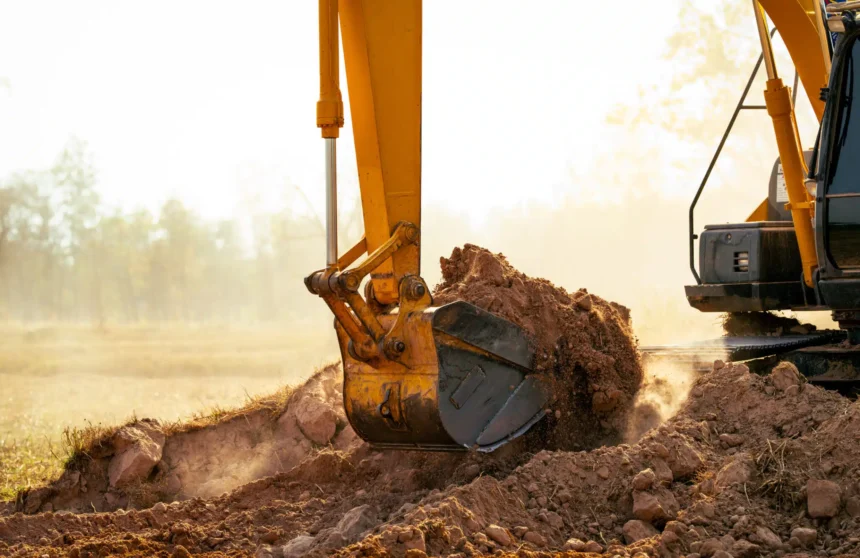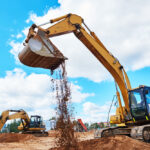Are you aware that improper excavation can lead to costly delays and safety hazards in residential construction? For homeowners, builders, and contractors alike, mastering the top excavation techniques for residential projects is crucial to ensure a smooth and successful build. This article addresses the core challenges related to excavation, such as choosing the right methods, understanding soil types, and complying with local regulations. By diving into essential techniques like trenching for utilities and proper grading for drainage, we’ll guide you through the process of selecting the appropriate equipment and ensuring safety. Additionally, we’ll highlight the importance of conducting thorough soil surveys, especially when excavating for basements. By the end, you’ll be equipped with the knowledge to lay a solid foundation for your residential project, paving the way to a more efficient and cost-effective construction experience. Let’s explore these excavation techniques together and build a strong start for your project.
Effective Excavation Methods for Residential Construction
What excavation methods are best for residential construction?
Selecting the optimal excavation techniques is crucial for successful residential construction.
Choosing the right excavation methods is key to achieving success in residential construction.
Trenching is essential for laying underground utilities such as water, sewer, gas, and electrical lines, while proper grading ensures water flows away from your home, enhancing drainage and foundation stability.
For projects involving basements, temporary shoring is vital for safety during the digging process.
- Consider over-excavation in areas with expansive soils to replace unsuitable materials.
- Use mechanical breaking or blasting for rock excavation in rugged terrains, adhering to safety regulations.
- Pay close attention to detail at every stage of excavation to establish a solid foundation.
For more insights into effective excavation practices, see our guide on foundation stability.
Trenching Techniques for Utilities Installation
Selecting the appropriate equipment for trenching is crucial for effective utility installations, but have you considered how trench depth varies by utility type?
Understanding these depth requirements not only ensures compliance but also enhances safety during the excavation process.
What’re the best practices for maintaining safety in deeper trenches?
Equipment Options for Trenching
What’re the best equipment options for trenching?
When it comes to trenching for utilities, selecting the right machinery is crucial. Mini-excavators excel in tight spaces, providing precision for installation tasks.
For versatility, backhoe excavators can handle various trench depths and grading needs. However, for larger projects requiring deeper and wider trenches, full-size excavators are the optimal choice.
- Consider mini-excavators for narrow access areas.
- Use backhoe excavators for multiple tasks and flexibility.
- Opt for full-size excavators for extensive trenching work.
Always ensure compliance with local regulations and prioritize safety measures, such as regular equipment inspections and shoring for deeper trenches.
For further insights on trenching best practices, check out our guide on utility installation safety.
Depth Standards for Utilities
What’re the depth standards for utility installation?
When digging trenches for utility installation, it’s crucial to adhere to specific depth standards to ensure safety and functionality.
For instance, water lines should be installed at a depth of 24-36 inches to prevent freezing. Sewer lines require deeper placement, typically between 4-10 feet, to ensure proper gravity flow and to withstand surface loads.
- Power lines are generally set at 24-40 inches.
- Gas lines should also be buried at a depth of 24-36 inches, depending on local regulations and soil conditions.
Proper excavation techniques, such as maintaining a minimum 5% slope, help avoid water pooling and ensure effective drainage, preserving the integrity of the installed utilities.
For more detailed excavation guidelines, see our comprehensive guide on utility trenching.
Safety Measures in Trenching
How can you ensure safety during trenching for utility installations?
Ensuring safety during trenching for utility installations is crucial for the well-being of the workforce and the project’s success. Key measures include adhering to proper trench depth guidelines—24-36 inches for water lines and 4-10 feet for sewer lines. Implementing excavation techniques with mini-excavators not only enhances safety but also increases efficiency.
- Equip all personnel with personal protective equipment (PPE), such as hard hats and high-visibility vests.
- Conduct regular inspections of trench walls to identify any signs of instability.
- Use shoring for trenches over 5 feet deep to prevent collapses.
For more information on maintaining safety standards, see our guide on trenching regulations and best practices.
Grading and Its Importance in Site Preparation
How Does Proper Grading Ensure a Stable Foundation?
Proper grading is vital for establishing a stable foundation for residential projects. By leveling the land, you promote effective drainage, which directs water away from structures and mitigates erosion risks. This step is crucial for preventing foundation issues caused by water accumulation near your home.
- Aim for a minimum slope of 5% for optimal drainage.
- Utilize modern techniques like laser-guided grading for accuracy.
- Adapt grading methods to specific soil conditions, such as clay or sandy terrain.
With precise grading, you set the groundwork for a successful construction project, minimizing future maintenance costs and avoiding costly water-related problems.
For more insights on site preparation, check out our guide on essential excavation techniques.
Basement Digging: Steps and Considerations
Before you begin digging your basement, understanding the soil composition and water table is crucial for safety and stability.
What additional steps should you take to ensure proper excavation techniques and compliance with building regulations?
Exploring temporary shoring and waterproofing methods can further safeguard your project against potential issues.
Site Preparation Essentials
How can you ensure safe site preparation for a basement digging project?
To ensure safety and compliance during site preparation for a basement excavation, start with a comprehensive geotechnical survey. This evaluation assesses soil stability and ensures the long-term integrity of the structure.
Next, accurately mark property lines to comply with local regulations and prevent disputes with neighbors.
- Conduct a thorough geotechnical survey.
- Mark property boundaries precisely.
- Consider implementing temporary shoring for deeper excavations.
Following these steps not only safeguards the project but also prepares the site for effective waterproofing, which is crucial in moisture-prone areas.
For more detailed insights on excavation techniques, see our guide on site preparation strategies.
Excavation Safety Measures
How can you ensure excavation safety when digging a basement?
To ensure excavation safety during basement digging, start with a comprehensive site assessment, including a geotechnical survey to check soil stability.
Identifying underground utilities through utility mapping is crucial to avoid damage and delays.
- Implement shoring systems such as trench boxes to prevent cave-ins.
- Require all workers to wear personal protective equipment (PPE) like hard hats and steel-toed boots.
- Establish a clear emergency response plan to address potential accidents.
By following these safety measures, you can create a secure working environment for your project.
For more detailed guidelines, see our comprehensive guide on excavation best practices.
Site Clearing: Preparing for Construction
How is site clearing essential for construction projects?
Site clearing is crucial for preparing a residential construction project, transforming an unkempt plot into a usable area.
To ensure a safe workspace, it’s necessary to eliminate obstacles such as trees and rocks. Conducting a thorough site assessment helps identify underground utilities and potential environmental hazards, preventing costly setbacks.
Using specialized equipment like bulldozers and excavators accelerates the clearing process, ensuring the foundation is laid on stable ground, which is vital for the building’s structural integrity.
Adhering to local regulations and securing necessary permits is imperative to avoid legal complications and ensure safety compliance.
- Assess the site for underground utilities.
- Utilize heavy machinery for efficiency.
- Follow local regulations to prevent issues.
For more information on navigating construction regulations, see our guide on obtaining building permits.
Factors Influencing Method Selection in Los Angeles
How do soil types influence excavation methods in Los Angeles?
When undertaking residential excavation in Los Angeles, understanding soil types is vital for selecting the appropriate method. Different terrains—sandy, clay-rich, or rocky—demand specific techniques for efficient removal.
Understanding soil types is crucial for choosing the right excavation method in Los Angeles.
For example, sandy soil may require less heavy machinery than rocky terrain, which could need blasting or specialized equipment.
Additionally, local regulations and compliance with permitting processes also play a crucial role. Always map out existing underground utilities to avoid issues during excavation, often utilizing trenching or vacuum excavation methods.
- Assess soil characteristics before planning.
- Ensure compliance with local regulations.
- Map utilities to prevent damage.
To learn more about navigating local regulations and permitting, check out our guide on excavation compliance in Los Angeles.
Safety Protocols, Equipment Use, and Cost Considerations
How can safety and equipment use enhance residential excavation projects in Los Angeles?
Prioritizing safety and proper equipment use is crucial for successful residential excavation in Los Angeles. Implementing safety protocols, including personal protective equipment (PPE) and effective shoring systems, helps mitigate risks of accidents and injuries on site.
Additionally, utilizing heavy machinery like excavators and backhoes ensures efficient earth-moving operations. Regular maintenance and comprehensive operator training for this equipment are vital for seamless functionality.
- Ensure all workers are equipped with appropriate PPE.
- Establish robust shoring systems tailored to the site.
- Maintain clear communication with utility companies to avoid disruptions.
Frequently Asked Questions
What Is the 5 4 3 2 1 Rule for Excavation?
FAQ
What is the 5-4-3-2-1 rule for excavation? The 5-4-3-2-1 rule for excavation helps ensure safety and efficiency by focusing on site evaluation, equipment choice, and necessary safety measures.
How does the 5-4-3-2-1 rule improve excavation projects? By following the 5-4-3-2-1 rule, excavation projects can minimize risks related to soil types, drainage, and utility management, leading to smoother operations.
What are the steps in the 5-4-3-2-1 rule for excavation? The steps in the 5-4-3-2-1 rule include assessing site conditions, selecting appropriate machinery, implementing safety protocols, and considering environmental factors.
Why is the 5-4-3-2-1 rule important in excavation? The 5-4-3-2-1 rule is crucial for excavation as it ensures thorough planning, compliance with permits, and effective cost management throughout the project.
Can the 5-4-3-2-1 rule be applied to all excavation projects? Yes, the 5-4-3-2-1 rule can be applied to various excavation projects, regardless of size, to enhance safety and efficiency.
What Are the Different Excavation Methods?
FAQ
Q: What are the main types of excavation methods? A: The main types include trenching, bulk excavation, and dredging, each suited for different soil conditions and project needs.
Q: How do I choose the right excavation method? A: Consider factors like soil type, project depth, required precision, and environmental impacts to select the most effective excavation method.
Q: What is trenching in excavation? A: Trenching is an excavation method that creates narrow, deep ditches for utilities or foundations, allowing for efficient access and placement.
Q: How does soil stabilization affect excavation? A: Soil stabilization improves ground strength and reduces risks during excavation, ensuring safety and efficiency in construction projects.
Q: What role does heavy machinery play in excavation? A: Heavy machinery, such as excavators and backhoes, enhances productivity and precision in various excavation methods, making large-scale projects manageable.
Q: Why is safety important in excavation methods? A: Safety protocols minimize hazards, protect workers, and ensure compliance with regulations, especially when dealing with different soil types during excavation.
What Is the Excavation Method for Basements?
FAQ
Q: What is the best method for basement excavation? A: The best method for basement excavation involves clearing the site, marking property lines, and selecting appropriate equipment while ensuring safety and compliance with local regulations.
Q: How deep can you excavate for a basement? A: Basement depth typically ranges from 8 to 10 feet, but it can vary based on local building codes and soil conditions.
Q: What safety measures should I take during basement excavation? A: Ensure safety by assessing soil types, using proper equipment, providing adequate support for excavations, and following safety regulations.
Q: What equipment is needed for basement excavation? A: Essential equipment for basement excavation includes excavators, backhoes, and dump trucks, depending on the project scale and soil conditions.
Q: How do I handle drainage during basement excavation? A: Plan for effective drainage solutions such as French drains or sump pumps to prevent water accumulation in the basement during excavation.
Q: What waterproofing techniques are recommended for basements? A: Recommended waterproofing techniques include applying sealants, installing drainage systems, and using moisture barriers to protect the basement from water intrusion.
What Are the Three Types of Excavation in Construction?
FAQ
Q: What are the types of excavation in construction? A: The three types of excavation in construction are earth excavation, rock excavation, and trenching excavation.
Q: How is earth excavation different from rock excavation? A: Earth excavation involves removing soil, while rock excavation requires breaking through solid rock layers. Both are crucial in construction.
Q: Why is trenching excavation important? A: Trenching excavation is vital for laying utilities, drainage systems, and foundations, ensuring structural integrity and proper site functionality.
Q: What factors influence excavation methods in construction? A: Factors include project type, soil conditions, site preparation needs, and environmental considerations, all impacting the choice of excavation methods.
Q: What safety measures are necessary for excavation projects? A: Essential safety measures include site assessments, protective equipment, and proper equipment usage to prevent accidents during excavation in construction.
Conclusion
In conclusion, selecting the right excavation techniques for residential projects is essential for ensuring a successful build. By implementing the strategies outlined in this article, you can avoid costly setbacks and enhance the efficiency of your project. Utilizing methods like trenching and grading not only simplifies the construction process but also improves site safety. For those in regions like Los Angeles, being aware of local factors can further streamline your efforts. To make the most of your excavation journey, consider exploring more tips or reading related guides that can help you take the first step toward a seamless construction experience.


